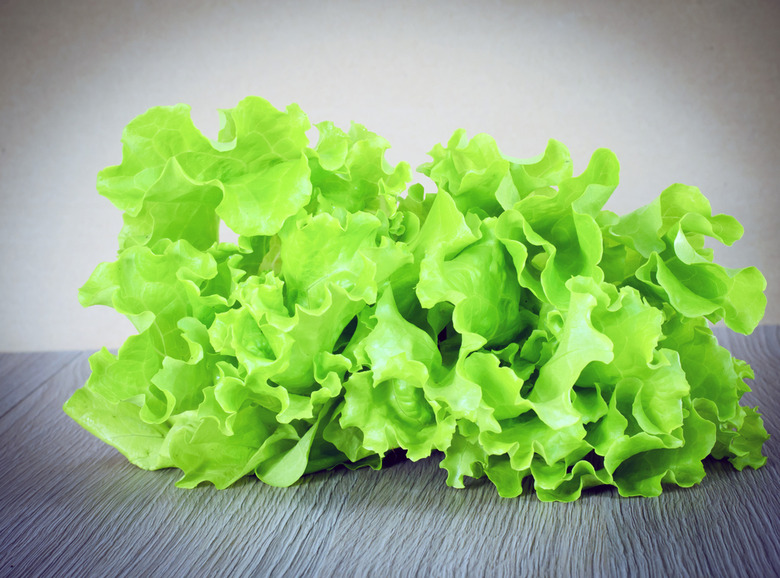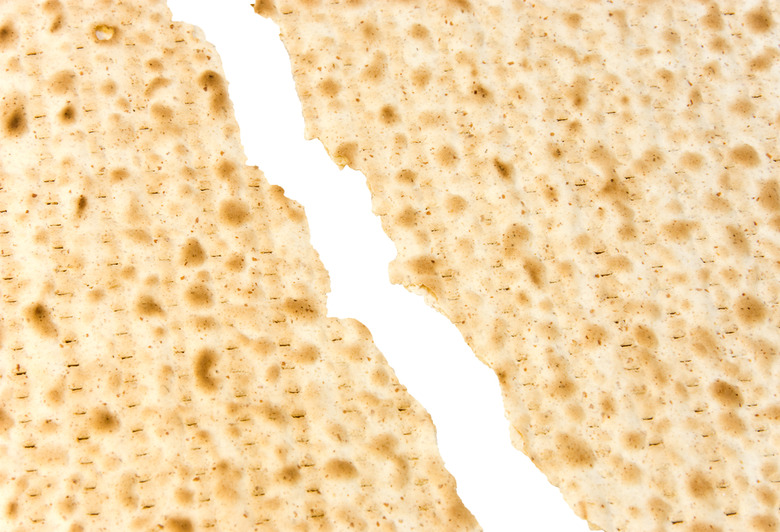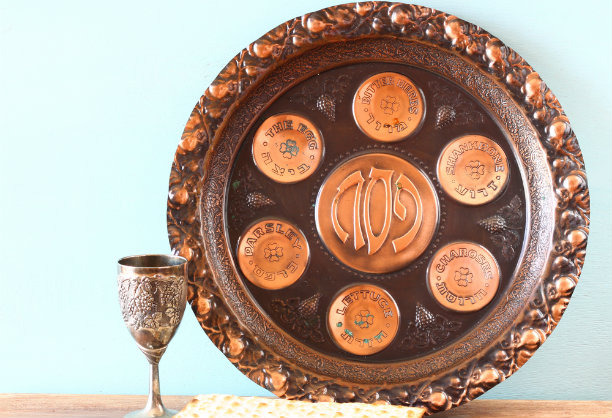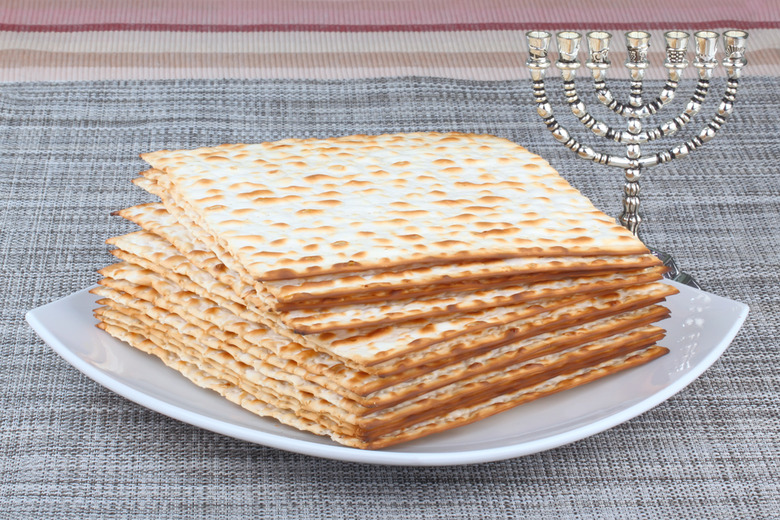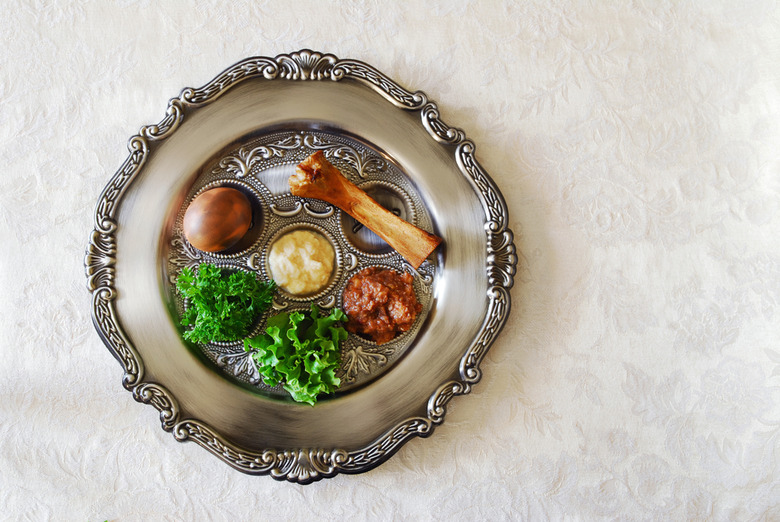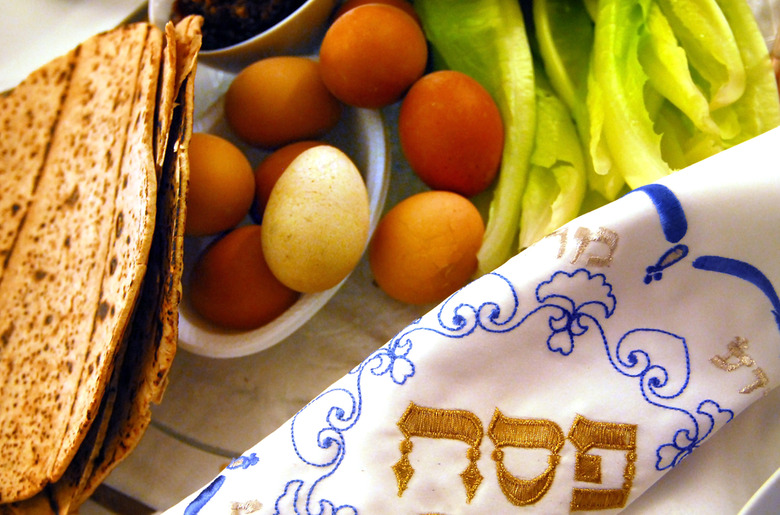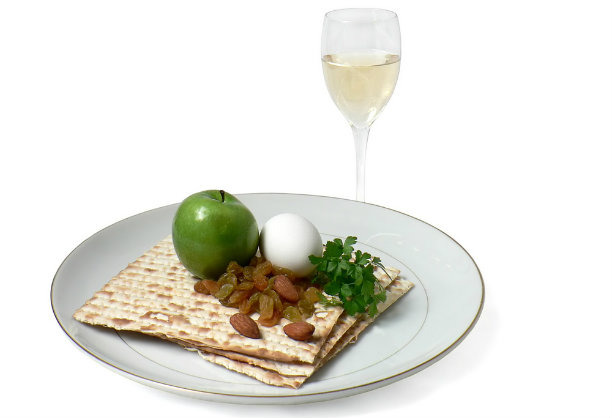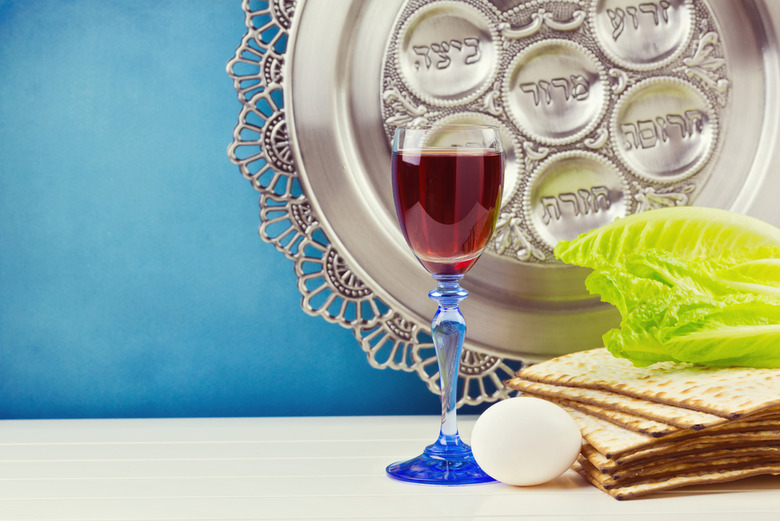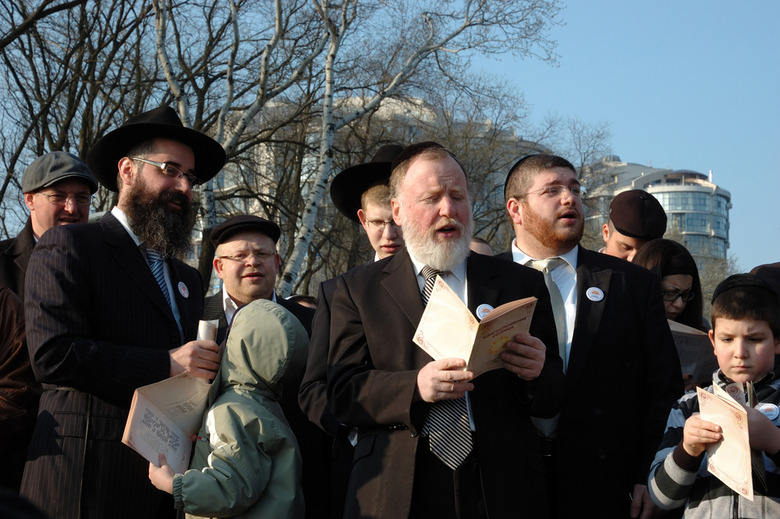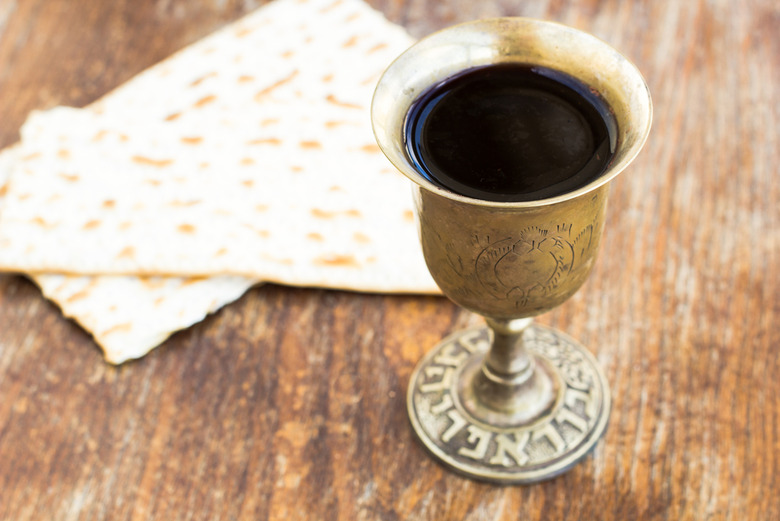What Is A Seder? (Slideshow)
The Seder begins with the recitation of the kiddush over wine (the first of four glasses throughout the ceremony). The kiddush proclaims the holiness of the holiday. Then everyone at the table takes a drink from their cup.
Next, water is poured over the hands to symbolize ritual purification. Traditionally a pitcher is used to pour water over the right hand followed by the left, and a blessing is usually said, but not at this point of the Seder.
Kadesh (Sanctification)
The Seder begins with the recitation of the kiddush over wine (the first of four glasses throughout the ceremony). The kiddush proclaims the holiness of the holiday. Then everyone at the table takes a drink from their cup.
Yachatz (Breaking the Matzah)
A plate of three matzot is always on the table during a Seder. The Seder leader takes the middle piece and breaks it in half, which recalls God parting the sea for the Israelites to cross. The smaller piece, symbolizing humility, is put between the remaining two matzot and will be consumed later as the "bread of poverty." The larger half becomes the afikomen, which is hidden for the children to find later.
Maggid (Telling the Passover Story)
This is the moment when the Exodus story is retold, beginning with the youngest person asking the Four Questions, each of which is a variation of: "Why is this night different from all other nights?" Participants answer these questions by taking turns reading from the Haggadah. Next, the four types of children are described — wise, wicked, simple and the child who doesn't know how to ask a question — allowing for self-reflection and discussion. A second cup of wine is poured and as each of the 10 plagues that struck Egypt is read aloud, participants dip a finger into their wine and put a drop onto their plates. After the symbols on the Seder plate are discussed, everyone can drink their wine.
The Seder Plate and Rachtzah (Hand Washing)
The Seder Plate, containing the symbolic foods in the retelling of the Exodus, is the centerpiece of the Seder table. There are seven symbols, but they are not all required. There's the Vegetable (Karpas), saltwater-dipped vegetable consumed at the beginning of the Seder recalling an ancient tradition in Jerusalem; the Shank Bone (Zeroa)/ Roasted Beet represents the tenth plague which was the killing of Egyptian firstborn sons, and the marking of Jewish doorposts with lamb's blood to signal that death should pass over them; the Hard Boiled Egg (Baytzah), symbolizes fertility and mourning the loss of the two Temples; the Charoset, a mixture of apples, nuts, wine, and spices, representing the mortar the Israelites used to build Egyptian structures; the Bitter Herbs (Maror) which reminds participants of the harshness of servitude; the Bitter Vegetable (Hazeret), like romaine, also symbolizes the bitterness of slavery; and the Orange, an optional and recent addition to the Seder plate that represents the inclusion of women and homosexuals in Jewish tradition.
After examining the Seder plate and telling the Passover Story, everyone washes their hands again. This time the appropriate blessing is spoken, beginning a silence that lasts until the blessing for the matzah.
Motzi (Blessing for the matzah)
Now the motzi, the blessing for bread, is said over the matzah. The blessing in English is "Praised are You Adonai our God, Ruler of the Universe, who brings forth bread from the earth." Next the mitzvah (commandment) to eat matzah is said. After the blessing for the bread, everyone eats his or her matzah.
Maror (Bitter Herbs)
The consumption of the bitter herbs during the Seder service reminds participants of the harshness of the Israelites' servitude, as slaves in Egypt. Horseradish is most often used here and a dollop is placed on the matzah and then eaten. In the next step, everyone makes a "Hillel Sandwich" by putting maror and charoset between two pieces of matzah, and then eats those sandwiches.
Shulchan Orech (Dinner)
Now it's time for the meal to begin and for everyone to dig into the delicious feast! Passover Seder staples include hard-boiled eggs, hot matzah ball soup, brisket, roasted potatoes, gefilte fish, asparagus, potato kugel and charoset. Less traditional dishes include matzah pizza and matzah salad. Save room for dessert, which often includes ice cream, cheesecake, or mini flourless chocolate cakes, and other unleavened tasty things, like special Passover pecan bars.
Tzafan (Eating the Afikomen)
After eating the meal and dessert, the hidden afikomen is found, returned to the Seder leader and then consumed. The afikomen is the last food eaten during the Seder.
Barech (Blessing)
A third cup of wine is poured for everyone at the table, and after the blessing is recited, participants drink the wine. An additional glass is poured for the prophet Elijah, and a door is opened, inviting him to enter the home.
Hallel (Songs of Praise)
The door is then closed and songs of praise to God are sung. Next, everyone drinks the fourth and final glass of wine.
Nirtzah (Conclusion)
With that, the Seder is over, but on most occasions guests say one final blessing, "Next year in Jerusalem!" expressing the hope that Passover will be celebrated in Israel in the following year.

